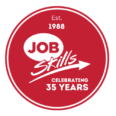
Finding and retaining the right talent is crucial for any business looking to grow and succeed, especially in Canada’s competitive job market. The right employees can drive innovation, improve productivity, and foster a positive work environment. In this blog post, we will explore effective strategies for finding, motivating, and engaging top talent to help your business thrive.
The Importance of Hiring and Retaining Talented Employees
In today’s fast-paced business environment, having the right team in place can make or break your success. Talented employees bring expertise, creativity, and dedication, which are essential for driving business growth. However, finding and retaining these employees requires a strategic approach. This guide will cover key strategies for identifying and keeping the best talent, from recruitment to long-term engagement.
Finding the Right Talent
Define Your Needs Clearly
Before you start the hiring process, it’s essential to define your needs clearly. A detailed job description is a critical tool in attracting the right candidates. It should outline the qualifications, responsibilities, and expectations for the role. Additionally, it should convey your company culture, so potential candidates can determine if they are a good fit.
Key elements to include in a job description are:
- Qualifications: Specify the required education, skills, and experience.
- Responsibilities: Clearly outline the tasks and duties associated with the role.
- Company Culture: Provide insights into your company’s values and work environment.
Utilize Multiple Recruiting Channels
To reach a diverse pool of candidates, utilize multiple recruiting channels. Job boards, social media, and recruitment agencies are effective ways to find potential hires. Each channel has its strengths, and using a combination ensures you cast a wide net.
Effective channels to consider:
- Job Boards: Websites like Indeed and LinkedIn are popular for job postings.
- Social Media: Platforms like Facebook and Twitter can help you reach a broader audience.
- Recruitment Agencies: Professional agencies can assist in finding candidates that match your specific needs.
Leverage Employee Referrals
Employee referrals are a valuable source of potential candidates. Encouraging current employees to refer suitable candidates can lead to high-quality hires. Setting up a referral program with incentives can motivate employees to participate actively.
Benefits of employee referrals:
- High-Quality Candidates: Referred candidates often align well with company culture.
- Cost-Effective: Reduces recruitment costs compared to other methods.
- Employee Engagement: Involves current employees in the hiring process, boosting their engagement.
Implement an Effective Hiring Process
Having a streamlined hiring process is crucial for attracting top talent. This includes steps like screening, interviews, and assessments. Clear communication throughout the process ensures a positive experience for candidates.
Steps to create an effective hiring process:
- Screening: Initial review of resumes and applications to shortlist candidates.
- Interviews: Conduct structured interviews to assess candidates’ fit for the role.
- Assessments: Use tests or assignments to evaluate specific skills and abilities.
Onboarding New Employees
Create a Comprehensive Onboarding Plan
A structured onboarding process helps new hires integrate smoothly into the company. It sets the tone for their future engagement and productivity. An effective onboarding plan includes orientation, training, and regular check-ins.
Key components of an onboarding plan:
- Orientation: Introduce new hires to the company’s culture and policies.
- Training: Provide role-specific training to equip new employees with necessary skills.
- Check-Ins: Regular follow-ups to address any concerns and provide support.
Foster Early Engagement
Making new hires feel welcome from day one is vital for their long-term engagement. Simple gestures like a welcome kit or team lunch can make a significant impact. Activities that promote early engagement help new employees feel valued and connected.
Tips for fostering early engagement:
- Welcome Kit: Provide new hires with branded merchandise and essential materials.
- Team Introductions: Arrange meetings with key team members to build relationships.
- Mentorship: Assign a mentor to guide new hires through their initial weeks.
Provide Necessary Training
Training is a critical aspect of onboarding. It ensures that new employees understand their roles and have the skills needed to perform effectively. Offering various training methods can cater to different learning styles.
Essential training topics:
- Company Policies: Educate new hires on company rules and regulations.
- Role-Specific Skills: Provide training tailored to the specific role.
- Ongoing Development: Offer continuous learning opportunities to enhance skills.
Keeping Employees Motivated
Recognize and Reward Contributions
Recognizing and rewarding employees for their contributions is essential for maintaining motivation. It shows that their hard work is appreciated and encourages them to continue performing at their best.
Ideas for rewarding employees:
- Bonuses: Offer financial incentives for outstanding performance.
- Public Recognition: Acknowledge achievements in team meetings or company newsletters.
- Small Perks: Provide perks like extra time off or gift cards as tokens of appreciation.
Offer Opportunities for Growth
Providing career development opportunities is crucial for employee retention. When employees see a clear path for advancement, they are more likely to stay motivated and committed to the company.
Examples of growth opportunities:
- Promotions: Offer advancement opportunities based on performance and potential.
- Additional Responsibilities: Assign challenging projects to help employees grow.
- Training Programs: Provide access to courses and workshops for skill enhancement.
Foster a Positive Work Environment
A positive work environment boosts employee morale and productivity. Elements like open communication, supportive culture, and work-life balance contribute to a healthy workplace.
Tips for creating a positive work environment:
- Open Communication: Encourage transparent and honest dialogue among employees.
- Supportive Culture: Foster a culture of collaboration and mutual respect.
- Work-Life Balance: Promote policies that support employees’ well-being.
Ensure Competitive Compensation and Benefits
Offering competitive pay and benefits is essential for attracting and retaining top talent. Employees need to feel that their compensation reflects their worth and contributions.
Overview of attractive benefits:
- Health Insurance: Provide comprehensive health coverage for employees and their families.
- Retirement Plans: Offer retirement savings plans with employer contributions.
- Flexible Hours: Allow flexible working hours to accommodate employees’ needs.
Enhancing Employee Engagement
Encourage Open Communication
Transparent and open communication is key to employee engagement. It builds trust and ensures that employees feel heard and valued.
Strategies for promoting open dialogue:
- Regular Meetings: Hold frequent team meetings to discuss progress and address concerns.
- Anonymous Feedback Channels: Provide channels for employees to share feedback anonymously.
Involve Employees in Decision-Making
Involving employees in decisions that affect them increases their engagement and commitment. It shows that their opinions are valued and considered.
Ways to involve employees:
- Brainstorming Sessions: Conduct sessions to gather ideas and insights from employees.
- Feedback Surveys: Use surveys to collect input on various aspects of the business.
Promote Work-Life Balance
Supporting work-life balance is crucial for employee well-being and productivity. When employees feel balanced, they are more motivated and engaged.
Tips for encouraging balance:
- Flexible Working Hours: Allow employees to choose their working hours.
- Remote Work Options: Provide opportunities for employees to work from home.
Retention Strategies
Conduct Regular Performance Reviews
Regular performance reviews help employees understand their strengths and areas for improvement. Constructive feedback and goal-setting are essential for their development.
How to provide constructive feedback:
- Be Specific: Give clear examples of what employees are doing well and areas for improvement.
- Set Goals: Collaborate with employees to set achievable and meaningful goals.
Address Issues Promptly
Addressing employee concerns quickly is vital for maintaining a positive work environment. It shows that the company values its employees and is committed to their well-being.
Methods for resolving issues:
- Open Door Policy: Encourage employees to voice their concerns openly.
- Mediation: Use mediation to resolve conflicts and find mutually beneficial solutions.
Build a Strong Company Culture
A strong company culture aligns with your business values and creates a sense of belonging among employees. It fosters loyalty and engagement.
Tips for fostering a strong company culture:
- Define Core Values: Clearly articulate your company’s values and principles.
- Lead by Example: Ensure that leaders embody the company’s values and set the tone for the rest of the team.
Finding and retaining the right talent is essential for business growth. By implementing the strategies discussed in this guide, you can build a motivated and engaged workforce that drives your company’s success. Remember, your employees are your greatest asset—invest in them, and they will invest in your business.

Job Skills, a non-profit charitable community-based employment, and training organization has successfully delivered innovative programming for 35+ years across the Greater Toronto Area (GTA) and neighbouring regions. Since 1998 Job Skills has helped 4,800+ aspiring entrepreneurs plan and launch their businesses, including 1,700+ youth entrepreneurs. Job Skills continues their support and commitment to the success of the business community, engaging with 3000+ businesses across the GTA, assisting with recruitment, retention, and training services.
Job Skills’ employment specialists are there to answer any of your employment questions. Job Skills‘ staff offer solutions to all job seekers, including youth, newcomers, mature workers, persons with disabilities, and entrepreneurs. Job Skills’ knowledgeable team can help you make educated decisions, set goals, and create a strategy to help you become happier in your career. Job Skills works with local employers creating employment opportunities for Job Skills’ clients.
Thanks to government funding, Job Skills’ programs and services are free to all users. Job Skills have locations across Keswick, Stouffville, Markham, Brampton, and Mississauga. Job Skills also offers virtual services for community members unable to attend one of our offices for in-person activities.
Find your employment solution today. Visit www.jobskills.org

